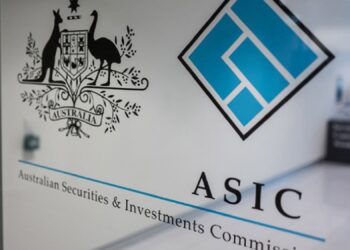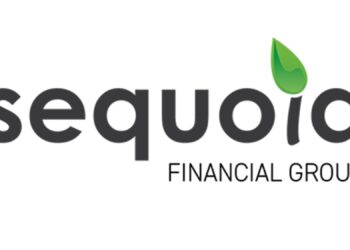There is one thing that all business owners, managers, and shareholders have in common, no matter where in the world they are from; they all want to make money.
The methodology and understanding of how to make money varies widely, however, my experience is that less than 20 per cent of businesses make an acceptable profit that is bankable.
Getting the foundations right
The very foundation of good performance in any company comes down to structuring your financials properly. From this solid foundation, you can then build a far more profitable business. Several elements are required to set a solid foundation.
Profit and loss
For some unknown reason, the profit and loss statement is invariably structured to suit statutory compliance criteria rather than structured for efficient management process.
The profit and loss statement is made up of six major parts:
1. Core business sales
Sales do not reflect the profitability of the company, but rather reflect the base on which to structure the company’s costs, and consequently, the company profits. (See Graph 1 for a typical, commercially sound structure.) (please see Money Management Magazine November 23, 2006 page 44).
2.Value adding costs
Value adding costs are made up of:
~ direct labour plus costs;
~ external costs;
~ materials;
~ subcontractors; and
~ components.
3. Costs assisting the value adding process
These costs are often referred to as overheads. These costs are made up of:
~ indirect labour;
~ supervisors and managers;
~ cleaners;
~ overheads;
~ consumables;
~ freight;
~ motor vehicles;
~ depreciation;
~ interest;
~ rent and associated outgoings (rates, water, and so on); and
~ energy.
4. Gross profit
Gross profit is calculated as sales less the value adding costs and the costs assisting the value adding costs.
The gross profit is the primary ‘financial’ key performance indicator, as it determines how much of the sales revenue is left to maintain the operations of the company and final profitability.
5. Operating expenses
Operating expenses are those expenses required to efficiently operate the business and are made up of:
~ administration costs;
~ marketing costs;
~ IT costs; and
~ financial costs.
6. Operating profit
Operating profit is the secondary ‘financial’ performance indicator and determines the overall performance of the company.
It is not the final profit (or loss) the company makes but rather the profit after all core business sales and expenses are taken into account. The operating profit is calculated from the gross profit less all the operating expenses.
In some cases where companies have a reasonable amount of ‘non core’ expenses and income, we would list these after operational profit but before calculating our profit before tax (PBT). The question is, Why bother to have an ‘operating profit’?.
There are two main reasons for it:
1. to conduct proper analysis of the company it is important we don’t contaminate the core business information with non core data; and
2. in most medium to large companies, the major shareholders are not running the company on a day-to-day basis, but do have a significant amount of control. The day-to-day running is left to managers and executives. In these instances, you want to measure their performance on core business income and expenditure, not on income and/or expenses over which they have no control.
Notice in Graph 1 (please see Money Management Magazine November 23 2006, page 44) how percentage figures are included. These are percentage to sales and serve as a good basis for setting benchmarks.
Balance sheet
The balance sheet measures the health of the company for the same given period. It is very important to work with both the profit and loss and balance sheet simultaneously. Diagram 1 (please see Money Management Magazine November 23, 2006 page 44) shows how a balance sheet should be structured.
It is important to note that with major assets and liabilities they should be listed separately, as shown for the liabilities. The assets are not listed separately in the example due to space.
The reason assets and liabilities should be listed separately is to enable analysis of each asset independently when we cover activity based costing. The other reason for this is when we look at ratio analysis we will want to compare ‘value adding’ assets with ‘non value adding’ assets.
When reading a balance sheet it is necessary to understand how it fundamentally works. The balance sheet tells us:
~ the status of our assets and liabilities (assets are what the company owns; liabilities tell us what the company owes or what assets belong to others). Assets must always be greater than the liabilities; and
~ how the assets and liabilities are broken down. Current assets and liabilities refer to the short-term (usually within a financial year). Non current assets and liabilities refer to the long term.
Current assets are usually defined as assets that can be converted into cash reasonably quickly and at true value. Examples are cash in the bank and inventory. Non current assets are usually defined as assets that will take longer to realise into cash and are unlikely to reach the value shown in the balance sheet. Examples are office equipment. If they are sold off in an auction they are likely to sell for far less than their current value.
Current liabilities, on the other hand, are liabilities that must be met within a few months, or within the financial year.
Leasing payments, for example, will start the financial year on what needs to be paid for that year, which is typically monthly.
So if the monthly payment is $100, then the current liability at the start of the financial year will be $1,200, and after month six it will be $600.
Non-current liabilities give us a picture of the long-term commitments of the company.
For example, if the office equipment we purchased above was purchased for $3,600, then at the start of financial year one the current liability would be $1,200, but the non-current liability would be $2,400. This is also assuming the term of the lease was three years and had zero residual.
The equity is the measure of what the company is worth in terms of net assets. It is not necessarily the market value; in fact, it seldom is.
Cash flow
Cash flow is the difference between the timing of receiving payment for your products versus paying for your expenses, wages and so on.
It would be wonderful if you could run your business cash positive all the time, however, certain factors have an effect on whether you are cash positive or cash negative.
Positive cash flow means you can pay all your expenses without help from external sources such as bank loans or personal loans.
When you are cash negative it simply means that you do not have sufficient cash to meet your bills at a particular point in time.
In this case, you either don’t pay your bills or you get, for example, an overdraft or bank loan.
Please note, if you get into a position where you are never likely to become cash positive and/or your cash position becomes increasingly worse, you could be technically bankrupt. If this is the case, you need to cease trading and call in liquidators. It is a criminal offence to trade while there is little or no chance of paying your bills.
What factors can affect your cash position?
~ Poor trading terms. The longer people take to pay the worse your cash position will become.
~ Low profit. The lower your profit becomes, the less likely it is that you are going to maintain a cash positive situation.
~ Losses. Lack of profit is a killer for cash flow. Logically, if it is costing the company money to deliver services, then you are never likely to be cash positive. Losses on a continued basis lead to bankruptcy.
~ Excessive interest bearing borrowings. This is the most common mistake business managers make. Optimism often overtakes reality and causes executives to keep borrowing on the basis that things will get better. They rarely do (unless there is a management change), and this causes additional stress on cash flow initially, finally leading to bankruptcy.
In Table 1, (please see Money Management Magazine November 23, 2006 page 46) for simplicity, we have assumed that the three companies all collect 80 per cent of sales in cash payments.
This example clearly demonstrates how poor profit affects cash flow.
In Table 2, (please see Money Management November 23, 2006 page 46) we have assumed that in two companies the profit is the same; however company A receives 70 per cent of its payments in 30 days, and 30 per cent in 60 days. Company B, however, has given extended terms and only receives 70 per cent of its payments in 90 days.
We now have 30 per cent in 60 days from month one plus 70 per cent in 30 days from month two.
This clearly demonstrates how payment terms can affect cash flow even when the profitability is the same.
Company B would need to secure an overdraft to remain trading. This means additional expense in interest rates. It also compounds the negative cash position.
Company A can clearly make capital purchases without borrowing, whilst company B can’t.
The other issue is that it is normal and healthy to expand your business.
Company A has the financial resources to do so, while Company B obviously doesn’t.
Margin and mark up
This is an area that seems to confuse most people. The gross profit (GP) is defined as the difference between the net selling price and the total cost of sales. It is often expressed as a percentage of sales.
Margin is defined as the percentage increase added to the true cost of sale to arrive at the final selling price. GP does not equal margin.
Example
If our total cost of sales is $100, what is the selling price if we want a 30 per cent GP? If you answered $130, you are wrong.
Consult the graph opposite (please see Money Management Magazine November 23, 2006 page 47) to determine the answer.
Graph s shows the gross profit on the ‘x’ axis (horizontal axis) and the corresponding percentage mark up on the ‘y’ axis (vertical axis).
The curved green line is the ‘multiplication factor’ that can be applied to the cost to arrive at the final selling price.
The answer we wanted to the question is $142.88 or a 42.88 per cent mark up. How did we arrive at that?
Go to 30 per cent gross profit on the ‘x’ axis. At the top of the cylinder we have included the percentage mark-up, which corresponds to the value shown by the dotted red line on the percentage mark up axis. If we then multiply 42.88 per cent to 100, we get the correct selling price of $142.88.
Alternatively, we can apply the multiplication factor. Again, go to the 30 per cent gross profit point on the ‘x’ axis.
If you then go straight up to the green line you will see that the multiplication factor is 1.43 (rounded off here).
Now, if you take 100 multiplied by 1.43 you will get the correct selling price of $143.
The problem with most companies is that GP is not reported properly, so it consequently gives an inaccurate account of the company’s position.
The main reason that the GP is not reported properly is because the cost of sales, which affects what the GP is going to be, is not structured properly or accurately.





